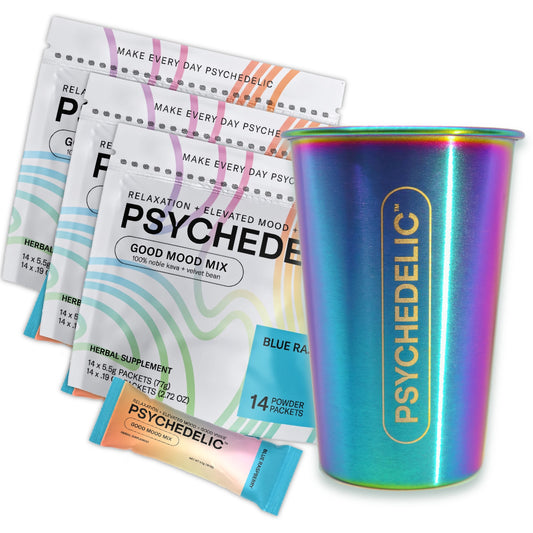Uncover the Details About Golden Psycho Everyone Should Know.
Uncover the Details About Golden Psycho Everyone Should Know.
Blog Article
All About Psychotomimetic Substances: Their Role in Psychological Research Study
Psychotomimetic substances, such as LSD and psilocybin, have actually gathered enhancing passion in psychological research study for their capability to reproduce psychotic signs and symptoms and offer understanding into numerous psychological wellness problems. Their communications within the mind, specifically through serotonin and dopamine pathways, suggest a complex connection in between awareness and neurobiology that may unlock novel restorative avenues. As researchers remain to examine their prospective applications, honest considerations surrounding their use in medical settings end up being critical, elevating important questions concerning safety and security and informed permission that require more exploration.
Definition of Psychotomimetic Substances
In the realm of emotional study, psychotomimetic substances are materials that can cause impacts resembling those of psychosis, such as hallucinations, misconceptions, and altered perceptions of truth - About Golden Psycho. These substances can be classified into various groups, including hallucinogens, dissociatives, and particular stimulants, each producing unique emotional impacts
The pharmacological activity of psychotomimetic substances commonly involves inflection of natural chemical systems, especially those relevant to serotonin, dopamine, and glutamate. Substances like lysergic acid diethylamide (LSD) primarily act on serotonin receptors, leading to extensive changes in sensory assumption and cognition.
The utility of psychotomimetics in research lies in their capacity to simulate psychotic symptoms, offering a model for comprehending the hidden systems of psychotic disorders such as schizophrenia. By examining the effects of these substances, researchers can gain understandings into the neurobiological and mental processes that contribute to psychosis.
Additionally, psychotomimetic compounds have been checked out for their healing capacity in dealing with numerous psychological wellness problems, including clinical depression and anxiety, highlighting their dual role in both research and possible medical applications.
Historic Growth and Context
The exploration of psychotomimetic compounds has an abundant historical context that goes back to old worlds, where compounds such as psilocybin mushrooms and peyote were utilized in spiritual and healing techniques. These very early usages frequently linked with spiritual routines, suggesting an extensive respect for the altered states of awareness generated by these substances.
The mid-20th century noted a considerable switching point in the research of psychotomimetic compounds, especially with the synthesis of LSD by Albert Hofmann in 1938. The succeeding popularization of LSD in the 1960s catalyzed a wave of interest in both its emotional effects and possible restorative applications. Scientists started to explore how these materials could mimic psychotic states, supplying insights right into mental disorder.
However, the boosting association of psychotomimetics with counterculture motions resulted in governing reaction, finishing in the criminalization of several of these substances. Despite these difficulties, the resurgence of rate of interest in the healing potential of psychedelics in the 21st century has actually motivated renewed study. This historic trajectory emphasizes the evolving understanding of psychotomimetic substances, changing from sacred substances to subjects of scientific questions and, potentially, restorative pledge.
Mechanisms of Activity
Understanding the mechanisms of activity of psychotomimetic substances reveals the detailed ways these substances communicate with the mind's neurochemistry. These substances mainly apply their results with inflection of neurotransmitter systems, particularly serotonin, dopamine, and glutamate.
In addition to serotonin, dopaminergic pathways are significantly affected by compounds like mescaline and certain cannabinoids, which can result in modified states of consciousness and changes in state of mind and motivation. Additionally, the NMDA receptor antagonism observed with compounds helpful resources like ketamine highlights one more path whereby psychotomimetics may generate dissociative states and profound changes in believed procedures.
The neurochemical waterfalls launched by these interactions lead to facility and diverse mental impacts. Comprehending these mechanisms is vital for both the advancement of psychological study and the restorative possibility of psychotomimetic compounds, as they provide understandings into the underlying neural correlates of modified states of consciousness.
Current Study and Applications
Current investigations into psychotomimetic substances have revealed a renewal of passion in their healing applications, specifically in the areas of psychiatry and psychology. Researchers have begun discovering compounds such as psilocybin, LSD, and ayahuasca for their possible to alleviate signs related to numerous mental wellness conditions, consisting of clinical depression, anxiousness, and PTSD.
Professional trials have demonstrated that, when provided in regulated settings, these compounds can promote profound mental experiences, promoting psychological innovations and enhanced healing outcomes. Studies have actually shown that psilocybin-assisted therapy can lead to significant reductions in treatment-resistant anxiety, with impacts lasting for a number of months post-treatment.
In addition, psychotomimetic substances are being examined for their capacity to cultivate neuroplasticity, possibly enabling even more reliable rewiring of maladaptive idea patterns. These findings recommend that such substances might act as adjuncts to conventional psychotherapeutic techniques, enhancing the effectiveness of healing interventions.
As study progresses, the emphasis is moving towards comprehending the ideal does, healing setups, and participant attributes that can optimize the advantages of my explanation these substances. This expanding field holds assurance for revolutionizing psychological wellness therapy paradigms and attending to the restrictions of conventional psychological drugs.
Ethical Factors To Consider in Research Study

Browsing the moral landscape of research entailing psychotomimetic substances is crucial to ensuring participant safety and the integrity of study outcomes. Researchers have to prioritize educated authorization, ensuring that participants totally comprehend the possible dangers and benefits related to the substances being examined. This includes offering detailed details regarding feasible psychological results, consisting of intense and long-lasting impacts, and enabling participants the opportunity to withdraw from the research any additional resources time scot-free.
IRBs evaluate research procedures to safeguard individual welfare and maintain ethical criteria. Furthermore, the possibility for coercion must be thoroughly examined, especially when susceptible populations are included.
Confidentiality is an additional paramount factor to consider. Researchers should apply durable procedures to safeguard individuals' identifications and information, especially offered the delicate nature of experiences related to psychotomimetic substances (About Golden Psycho). Inevitably, a dedication to moral practices not only promotes count on in between researchers and participants however also enhances the trustworthiness and legitimacy of the study end results, adding to the development of mental understanding

Conclusion
To conclude, psychotomimetic compounds, specifically classic psychedelics such as LSD and psilocybin, deal considerable understandings into mental disorders with their special systems of action. Their therapeutic capacity in resolving problems like stress and anxiety and PTSD emphasizes the value of ongoing research in this area. Ensuring moral requirements in research study techniques is important for individual safety and security and notified permission, enabling for a responsible exploration of these compounds' advantages and ramifications within mental science.
Report this page